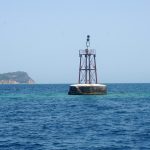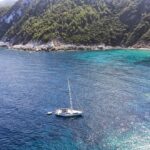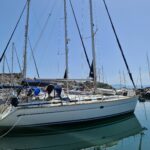Those of us who are lucky enough to travel in the Greek seas, will surely have met dolphins. These lovable and clever mammals of the sea often accompany our sailing vessels. As long as they swim near our boat, they immediately become the center of attention, with the friendly and playful way they approach us. Let’s learn some basic characteristics to distinguish them.
In the Greek seas we find four species of dolphins. The Common Dolphin, the Belt Dolphin, the Bottlenose Dolphin and the Gray Dolphin.
Common dolphin (Delphinus delphis)
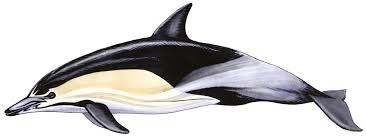
We distinguish it from the characteristic V which is formed in the middle of its body, where the dark colors of the back meet the light colors of the abdomen. Its average length is 1.80 meters. The colors of the belly are a composition of gray, white and yellow-beige, very complex and very different from other dolphins. We find it in almost all regions of the Aegean and the Ionian sea, but the most important region for the species is in the Thracian Sea. It feeds on fish such as anchovies, sardines and squid.
Under normal conditions, she gives birth to a baby every 2-3 years and the pregnancy lasts 10 – 11 months.
The common dolphin was the most common species of dolphin in ancient Greece. In fact its name was given by Aristotle, as in antiquity it was abundant. Unfortunately, it is now threatened with extinction.
Striped dolphin (Stenella coeruleoalba)
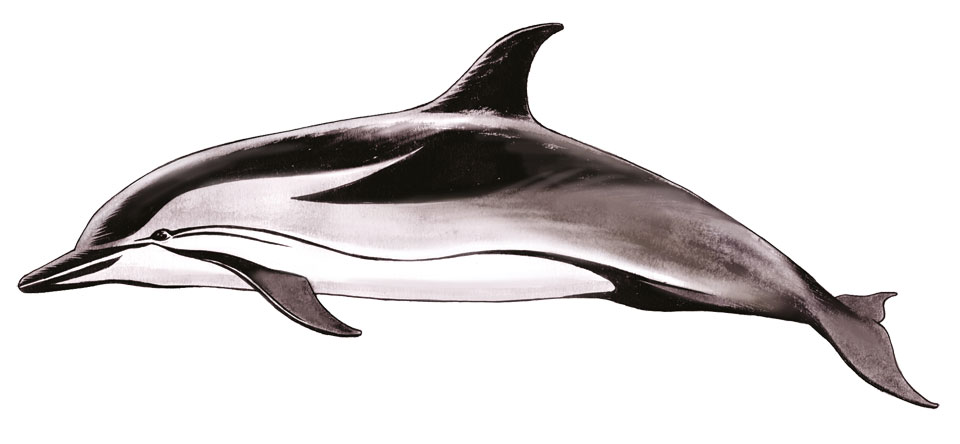
It is the smallest of the dolphins we meet, with an average length of 1.65 meters, but at the same time is the one that we meet most often in Greek waters. Its back is dark gray. It takes its name from the black stripe (belt) which starts from the eye and after deleting a curve slightly upwards is directed towards its abdomen, dividing the light-colored part in three zones.
Is a diligent and fast swimmer, it likes to jump and play on the surface of the water. We often meet herds to follow the ships.
It feeds mainly on squid but also on surface fish such as anchovies. Grows up at the age of 11 to 12. Females give birth to a baby every 3 years or so. The maximum life expectancy is 45 years.
We can meet it in several areas in Greece, where the waters are deep relatively close to the shores, such as, for example, in the Northern Sporades, Southern Crete and the Corinthian bay, where its coexistence with common dolphins is an unprecedented global event.
Bottlenose dolphin (Tursiops truncates)
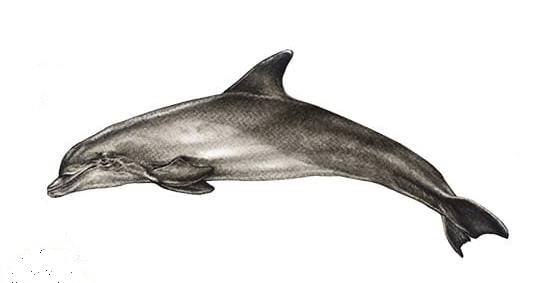
The bottlenose dolphin is the most famous and communicative dolphin. It has a gray color and its snout is relatively short. Its length reaches and exceeds the 3 meters. It is a talented sea acrobat, since it can jump up to 8 meters. It is a species of dolphins that can be trained, give performances in aquariums, they are even used for military purposes. A dolphin of this kind has been the protagonist of an entire television series.
Lives near coastal areas but avoids boats, as fishermen are not very friendly with it, because often gets caught in their nets destroying their fish. It is the second most common dolphin we meet in Greek waters. For feeding, it prefers fish that are very dear also to humans, such as red mullet, sardine and cod, while it does not ignore octopuses or cuttlefish. Its maximum life expectancy is 55 years and the adulthood comes between 7 and 13 years.
Risso’s dolphin (Grampus griseus)
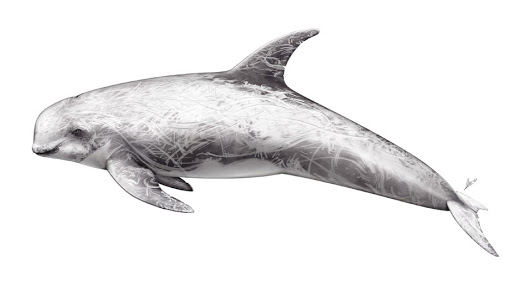
It is different from all other dolphins since it has almost no visible snout and its body is full of scratches. It is rarer to meet than the rest. It lives mainly in the Myrtos Sea, in Halkidiki, in the Northern Sporades, in the sea of Kythera and in southwestern Crete.
It is the largest dolphin that lives in the Greek seas, with a length that can reach up to 3.30 meters. Is born gray but as it grows older, its body fills with the characteristic white scratches, a result of fights with other dolphins of its species. It has a very short snout and a characteristic bulge on the forehead. It can dive up to 30 minutes in a depth of 500 meters. It feeds mainly on squid and occasionally on fish. The duration of pregnancy is 13-14 months, their exact lifespan is unknown but exceeds (probably by far) 30 years.


